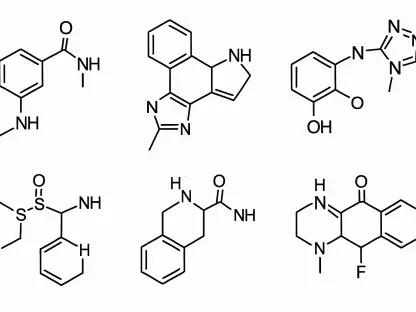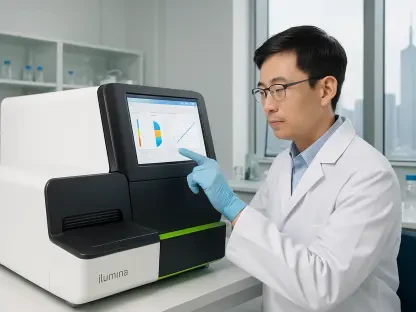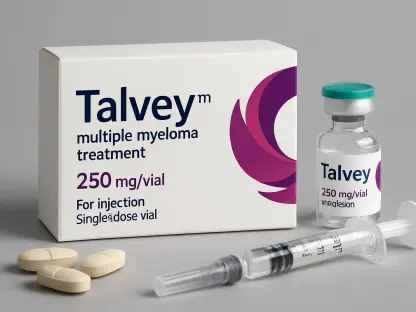Imagine a world where damaged tissues can be regenerated with pinpoint accuracy, where therapies are tailored to an individual’s unique genetic makeup, and where neurological disorders are treated by targeting the exact molecular missteps. This vision is becoming a reality thanks to a revolutionary advancement in RNA sequencing technology. Developed by scientists at Sylvester Comprehensive Cancer Center, Rapid Precision Run-On Sequencing (rPRO-seq) is shattering barriers in regenerative medicine by offering real-time insights into gene expression with minimal resources. This guide aims to help researchers, clinicians, and biomedical enthusiasts understand how to leverage rPRO-seq to unlock transformative potential in regenerative therapies and personalized healthcare.
The significance of this breakthrough cannot be overstated. For decades, limitations in RNA profiling have slowed progress in understanding cellular differentiation, a cornerstone of regenerative medicine. Traditional methods demanded large sample sizes and lengthy processing times, often rendering studies on rare cell types or patient-specific samples unfeasible. This how-to guide provides a clear pathway to applying rPRO-seq, detailing its innovative approach and demonstrating its impact on molecular research. By following these steps, readers can explore how to overcome historical challenges and contribute to cutting-edge therapeutic solutions.
This guide also underscores the urgency of adopting such technologies in a rapidly evolving field. With rPRO-seq, the ability to analyze gene activity dynamically and efficiently opens doors to previously unimaginable possibilities, from repairing brain cells to guiding stem cell development. Readers will gain a comprehensive understanding of the technology’s mechanisms and its practical applications in recent studies. The following sections break down the process into actionable steps, ensuring that even those new to transcriptomic analysis can grasp the potential of this tool in shaping the future of medicine.
Revolutionizing Regenerative Medicine with RNA Sequencing Innovation
The landscape of regenerative medicine is undergoing a seismic shift with the advent of rPRO-seq, a technology pioneered at Sylvester Comprehensive Cancer Center. This method stands out by providing real-time data on gene transcription, a feat that traditional RNA sequencing could only dream of achieving. Its capacity to work with as few as 5,000 cells in just 12 hours addresses longstanding obstacles, making it a game-changer for researchers aiming to develop therapies that regenerate tissues or combat neurological disorders.
Beyond its technical prowess, rPRO-seq holds promise for personalized medicine by enabling detailed molecular insights with minimal biological material. This means that even small biopsies or rare cell populations, once out of reach for analysis, can now inform treatment strategies. The technology’s implications are vast, potentially accelerating the design of therapies tailored to individual genetic profiles and paving the way for breakthroughs in patient care.
For those in the biomedical field, understanding and applying this innovation is crucial to staying at the forefront of therapeutic development. The ability to monitor active gene expression offers a window into cellular behavior that was previously obscured by slower, resource-intensive methods. As this guide unfolds, the focus will shift to practical steps for integrating rPRO-seq into research, ensuring that its benefits are accessible to a wide range of scientific endeavors.
The Evolution of RNA Sequencing: Overcoming Historical Challenges
RNA profiling has long been a cornerstone of molecular biology, yet its traditional approaches have posed significant hurdles for regenerative medicine. Methods prior to rPRO-seq often required millions of cells and days of processing, creating a bottleneck for studies involving limited or precious samples. Such constraints have delayed discoveries in cellular differentiation, a key process for developing therapies that repair or replace damaged tissues.
These limitations have had a particularly pronounced impact on research involving rare cell types, such as those derived from patient biopsies. The inability to analyze small sample sizes has hindered progress in understanding diseases at a molecular level, stalling the creation of targeted treatments. Moreover, the static nature of older sequencing data failed to capture the dynamic changes in gene activity, leaving researchers with incomplete pictures of cellular mechanisms.
The arrival of rPRO-seq marks a turning point in this narrative, addressing these historical challenges head-on. By drastically reducing the time and material needed for analysis, it empowers scientists to explore previously inaccessible areas of biology. This shift not only enhances the scope of regenerative research but also sets a new standard for efficiency and precision in transcriptomic studies, as detailed in the steps that follow.
Unveiling rPRO-seA Step-by-Step Breakthrough in RNA Analysis
Step 1: Capturing Real-Time Gene Transcription
The first step in utilizing rPRO-seq involves capturing nascent RNA to observe gene transcription as it happens. Unlike traditional RNA sequencing, which provides a static snapshot of accumulated RNA, this method focuses on RNA actively being produced. This dynamic view allows researchers to track gene activity in real time, offering a clearer understanding of how cellular processes unfold during critical stages of development or disease.
Unique Advantage: Observing Active Genetic Mechanisms
A standout feature of this approach is its ability to reveal the precise moments when genes are activated or silenced. This insight into active genetic mechanisms provides a deeper look into the regulatory processes driving cellular behavior. Such detail is invaluable for identifying potential intervention points in therapeutic development, particularly for conditions involving aberrant gene expression.
Step 2: Efficiency with Minimal Resources
The second step highlights rPRO-seq’s efficiency, requiring only 12 hours and as few as 5,000 cells to generate comprehensive data. This is a stark contrast to older methods that demanded days of processing and millions of cells. This streamlined process reduces both time and resource constraints, making RNA analysis more accessible to laboratories with limited samples or tight schedules.
Breaking Barriers: Access to Rare Cell Populations
This efficiency translates into unprecedented access to rare cell populations, such as those from small biopsies or unique patient samples. Researchers can now study cell types that were once beyond reach, opening new avenues for understanding disease-specific mechanisms. This capability is particularly transformative for regenerative medicine, where tailored approaches often depend on analyzing limited biological material.
Step 3: Insights into Neuronal Differentiation
In the third step, rPRO-seq is applied to uncover critical insights into neuronal differentiation, as demonstrated in a study focusing on the Integrator protein complex, specifically its subunit INTS11. This research revealed how INTS11 influences gene activity tied to brain development. The technology’s precision enabled the identification of specific molecular changes, shedding light on the pathways essential for neuronal health.
Critical Finding: Targeting Neurodevelopmental Disorders
A pivotal discovery from this application is that the absence of INTS11 deactivates genes crucial for preventing neurodevelopmental and psychiatric disorders. This finding points to potential therapeutic targets for conditions affecting brain function. By pinpointing these molecular vulnerabilities, rPRO-seq facilitates the development of interventions aimed at restoring proper gene regulation in affected cells.
Step 4: Uncovering Stem Cell Pluripotency Mechanisms
The fourth step involves using rPRO-seq to explore stem cell pluripotency, focusing on INTS11’s role in early embryonic gene regulation. A separate study showed that this protein begins influencing critical genes as early as day two of embryonic development. This early regulation is vital for maintaining stem cell identity and guiding differentiation, key factors in regenerative applications.
Early Regulation: Redefining Transcriptional Theories
This application of rPRO-seq has reshaped existing theories about transcriptional initiation by highlighting INTS11’s involvement at the earliest developmental stages. Such findings redefine the understanding of how cellular differentiation is controlled, offering fresh perspectives for manipulating stem cells in therapeutic contexts. This knowledge is essential for designing strategies to regenerate tissues with precision and efficacy.
Key Takeaways from rPRO-seq Advancements
The advancements brought by rPRO-seq can be distilled into several core achievements for quick reference:
- Dramatic reduction in analysis time to just 12 hours and sample size to only 5,000 cells.
- Real-time observation of active gene transcription, providing precise molecular insights.
- Significant discoveries regarding INTS11’s influence on neuronal and stem cell differentiation.
- Identification of new pathways for therapeutic development in neurology and regenerative medicine.
Broader Impact: Shaping the Future of Personalized Healthcare
The emergence of rPRO-seq aligns seamlessly with the biomedical field’s move toward precision and efficiency in research and clinical practice. Its ability to deliver rapid, detailed gene expression data positions it as a vital tool for real-time applications, such as monitoring tumor responses to therapy. This capability could transform how diseases are tracked and managed, offering clinicians a dynamic perspective on treatment effectiveness.
Additionally, the technology’s potential to uncover novel RNA biomarkers—previously undetectable due to their instability—holds promise for diagnostics. These biomarkers could enhance early detection and prognosis for a range of conditions, from cancer to neurological disorders. The focus on minimal sample requirements further democratizes access to cutting-edge analysis, benefiting smaller research facilities and patient-specific studies.
Looking ahead, challenges remain in expanding rPRO-seq’s application to diverse clinical samples. However, the vision of integrating this technology into routine medical practice is clear, with the potential to improve patient outcomes through tailored interventions. As research progresses over the coming years, from 2025 to 2027, the scope of its impact on personalized healthcare is expected to broaden, addressing complex medical needs with unprecedented accuracy.
Final Reflections on a New Era in Regenerative Therapies
The journey through the application of rPRO-seq provided a structured path to understanding its transformative role in RNA sequencing and regenerative medicine. Each step, from capturing real-time gene activity to uncovering molecular insights in neuronal and stem cell differentiation, highlighted a leap forward in scientific capability. The efficiency and precision of this technology stood as a testament to its potential in overcoming decades-old barriers in transcriptomic analysis.
Moving forward, the next steps involve exploring how to adapt rPRO-seq for even broader clinical scenarios, potentially integrating it with other diagnostic tools to enhance its utility. Researchers and healthcare professionals are encouraged to collaborate on scaling up its use, particularly in identifying additional molecular targets for therapy. This collaborative effort promises to refine regenerative strategies over time, addressing unmet medical challenges.
Moreover, the groundwork laid by these advancements opens avenues for innovation in patient-specific treatments. Future considerations include the development of standardized protocols to ensure consistent application across diverse settings. By building on the foundation established through rPRO-seq, the biomedical community moves closer to a reality where personalized regenerative therapies become a cornerstone of modern healthcare.









